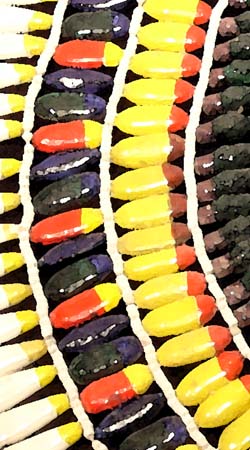Techniques and Tools
In forty years of practice, I have developed an effective toolbox of techniques including:
| Mindfulness Practice | www.mindfulness.com | |
| Emotionally Focused Couples Therapy | Very Well Mind | |
| EMDR | www.emdr.org | |
| The Enneagram | www.enneagraminstitute.com | |
| Imago Relationship Therapy | Psychology Today Article |
These and other tools coupled with my attentive presence, intuition, warmth, and clarity make me a trustworthy and inspiring guide.
Mindfulness Practice
Mindfulness is body-based awareness. When you are being mindful, you are aware of each experience in the body and mind and you stay with that experience, whether it is pleasant or unpleasant, such that you see what causes stress and harm to you or to another and what does not. I use mindfulness practice in my work to help you move under your stories to the felt experience of the sensation of emotion in your body. Breathing into the sensation leads you through to the experience of the emotion and allows it to release. Insight follows.
Mindfulness uses the wisdom of the body as a vehicle to unlock trapped emotions. Practicing mindfulness in daily life allows you to be less reactive and to build the muscle of returning to a centered place more easily.
 Emotionally Focused Couples Therapy (EFT)
Emotionally Focused Couples Therapy (EFT)
This method of couples counseling developed by Dr. Susan Johnson, is collaborative and respectful of clients and it shifts the focus from blame between the individuals to the awareness of the negative paterns between them. Research has shown EFT to be an effective way for couples to form stronger bonds and build better relationships.
EMDR
(Eye Movement & Desensitization Reprocessing)
Eye Movement and Desensitization Reprocessing were originally designed to alleviate the symptoms associated with traumatic memories. After successful treatments with EMDR, affective distress is relieved, negative beliefs are reformulated and psychological arousal is reduced. EMDR uses cross lateral brain integration in the form of repetitive sets of eye movements or tapping or sounds coupled with an extensive system of protocols to produce emotional and cognitive changes that usually result in spontaneous behavioral and personal change.
Enneagram
This system can be used as a psycho-spiritual map to gain insight into, and to develop compassion for, yourself and others. It is based on nine distinct personality types. Learning to recognize which one you most resonate with can lead to greater awareness of the motivations behind your behavior. It has taught me to see my personality strategy as a system I developed to survive. Working with the enneagram helps me to laugh at myself and to know that I am more than my personality. The enneagram provides a succinct and clear vehicle to follow a path to change from unhealthy to healthy responses in daily life. It has also been invaluable in helping me to understand that each person has their own take on reality, based on their unique perception and to be more accepting and less judgmental of others,
Imago Relationship Therapy
Imago is a system that creates connection and promotes dialogue between people. Dialogue is the language of love in all relationships. The three steps of dialogue- mirroring, validating and empathizing, allow us to deeply listen and to experience being heard, to discover the other, to grow into our potential and to experience connection. Imago helps people to learn specific techniques to practice greater compassion, learn new communication skills to break destructive patterns of relating and to use their relationship for emotional healing and spiritual growth.

